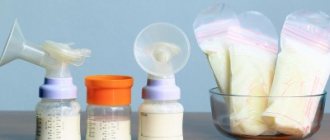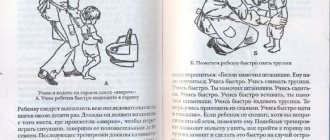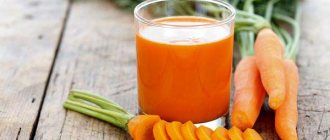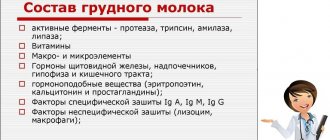Does pasteurized milk need to be boiled? Two types of milk currently predominate on the shelves of dairy departments: pasteurized and sterilized.
Many people ask: is it necessary to boil pasteurized milk at home before use? This is especially troubling for caring mothers of babies. It has long been proven that milk is a natural storehouse of useful microelements and substances. These include proteins, fats, carbohydrates, and a whole range of essential vitamins. Milk is especially necessary for a growing body; it fills it with “building material” for better growth and proper healthy development.
The original function of this product is to feed a newborn.
Nature has designed it so that milk is the result of a normal physiological function of mammals. People have been using milk from cows, goats, horses and other animals for food for many centuries. Since milk, like eggs and meat, is a product of animal origin, it should not be consumed raw. During the milking process, particles of skin or blood inevitably get into it, and with them harmful bacteria.
Milk processing methods have been developed in dairy industries. At the primary stage, wool and foreign particles are removed. The filtered raw materials are homogenized, that is, using a special technological operation, a uniform distribution of fat is achieved throughout the entire volume of the product. The homogenization process helps to extend the shelf life of the product. Then it is normalized and pasteurized.
Pasteurization is the heating of milk to a hot state no higher than 78°-85° C and then rapid cooling. During this measure, dangerous microorganisms are destroyed. Pasteurization helps to increase the shelf life of milk up to 1 week.
Do you need to boil homemade and store-bought milk?
milk boils out of the pan
Depending on who you are going to give milk to, decide whether boiling is necessary.
- If it is consumed by a healthy adult and a verified cow, then leave the homemade product without heat treatment. Just like the store stuff.
- When an adult is sick, and the supervising doctor allows him to eat dairy products, be sure to boil the homemade version.
For an infant and preschool child who does not have a food allergy to the product in question, offer only UHT milk from a tetra pack. Feel free to pour it from the package. Unlike homemade or other store-bought varieties, they must be boiled.
Currently, other milk processing methods are widely used in production.
For example, milk is boiled at a temperature of 100 C, which helps to completely rid the product of harmful microorganisms. this is called sterilization. The shelf life of sterilized milk reaches 30 days. A huge disadvantage of the product obtained during such enhanced heat treatment is the destruction of beneficial properties, a significant reduction in its biological and nutritional value for consumers.
In sterilized milk during high temperature processing:
- Almost the entire vitamin base is destroyed
- Of the minerals, iron and iodine are almost completely destroyed; other minerals are resistant to such high temperatures
- Folacin and vitamin C are also observed in very small quantities.
- Many essential amino acids cannot be tolerated.
- Omega-3 fatty acids are destroyed.
How to boil milk correctly?
- take suitable utensils;
- comply with the rules of procedure;
- strictly adhere to the heat treatment time.
Important! To check the naturalness of milk, do a small test:
- Take a glass of water.
- Drop some milk in there.
- Evaluate the result.
If the drop immediately spreads, then the milk was diluted before sale. An indicator of a quality product is a drop dropped to the bottom of the glass, which will dissolve there.
Choosing dishes
To boil milk without burning, it is better to give preference to pans made from:
- glass;
- aluminum;
- of stainless steel.
Important!
Enameled utensils are absolutely not suitable for this purpose. When looking through containers of suitable volume, give preference to those that have a thick or double bottom.
Getting ready to boil milk
In addition to the basic rules of technology, there are several secrets that will help prevent unpleasant consequences. To prevent milk from burning and running away, do the following:
- Rinse the pan thoroughly with cold water.
- Place the saucer upside down on the bottom.
Important! When the product reaches boiling point, it will not bubble much and form foam. That means he won’t run away.
Boil the milk
There are no particular difficulties in this procedure. For everything to go smoothly, all you need is:
- Be near the pan and watch the heat treatment process.
- Stir the milk constantly as it warms up.
- Remove foam formed during boiling.
This is all the wisdom of how to boil milk.
Important! The film that appears as the product cools should not be removed. This is where most of the nutrients are concentrated.
How long does it take to boil milk?
There are several opinions regarding how long to boil milk for a child:
- Some experts say that 2-3 minutes after the boiling point has been reached is enough.
- Other nutritionists advise making this process longer - from 10 minutes.
Important! Based on the basics of biology, most harmful microorganisms die at a temperature of 100 C, and the value of achieving this state for milk corresponds to 100.2-100.5 C. This means that the decision regarding the duration of 2-3 minutes will be justified and rational.
Details. Question answer
Is there anything useful left in the sterilized product?
Only some amino acids and minerals. It is advisable to use this type of processed milk for the population of remote areas, in field conditions.
Should pasteurized milk be boiled?
Pasteurized, which means freed from harmful bacteria and completely ready for consumption, does not require further boiling, and is safe for humans. Before sending milk to retail chains, dairy plants are required to test it for the presence of peroxidase. Its absence in the product indicates that all pathogenic bacteria have been destroyed.
IMPORTANT!
The only advice: slightly warm the milk when removing it from the refrigerator, since when warm it is more beneficial for the digestion process
Do I need to boil pasteurized milk for my baby?
Pasteurized milk is more suitable for children than others. It contains no preservatives, therefore it will not provoke any allergies. For preparing porridge it is suitable for six-month-old babies. And in a year you can try to give milk in its pure form.
IMPORTANT!
There is a small probability that even after pasteurization, microorganisms protected by a film resistant to heat treatment will not be destroyed. Although they may not be dangerous for adults, in the case of children it is not worth the risk; their digestive system is still too sensitive to this kind of irritants.
How to boil cow's and goat's milk correctly and for how long for children and infants: useful tips
child holding a glass of boiled milk with his hands
- Decide where to buy milk. If it's a store, choose one that doesn't need boiling. If a friend has thrush, then heat treatment is mandatory.
- Reduce the fat content of the product above 3.2% with water. Some mothers dilute milk with it before boiling in a ratio of 2:1, 3:1 and even 5:1.
- Have a separate small saucepan for these purposes, for example, 1 liter. Suitable for both regular and special-purpose containers.
- To prevent milk from burning, pour 5mm of water into the bottom of the pan and bring to a boil. Pour in the milk.
- Try not to be distracted anywhere from the boiling product. If necessary, stir it with a wooden spatula and skim off the foam.
- Fat or vegetable oil applied to the edges of the pan before applying heat underneath will help prevent milk from running off.
- Cook the milk over low heat.
- When boiling bubbles appear, turn off the heat in the pan.
- Depending on its material, either leave the milk until it cools or pour it into a glass container.
- For a child of any age, boil milk for no longer than 5-7 seconds.
Sterilized and pasteurized milk can have different fat contents from 1% to 4%
Milk fat is easily digested in the human body, as it has a low melting point and is in the form of small balls. The higher the fat content of pasteurized milk, the more fat-soluble vitamins A, D, E, K it contains, and A and K in sterilized milk. When the product is pasteurized, omega-3 fats are preserved. The energy value of the product is directly proportional to the fat content of the milk. It is contraindicated for people with lactose intolerance and gastrointestinal diseases.
Milk contains a difficult-to-digest protein , casein, which requires many enzymes to digest. For children, milk is an essential source of calcium, which is necessary for the formation of teeth and bones. Calcium ensures the normal functioning of the nervous and cardiovascular systems. For adults, it is better to use fermented milk products rather than milk, in which protein is present in a more easily digestible form.
The most useful for modern residents of polluted cities is village milk: cow's or goat's. If you manage to get high-quality village milk, the safety of which you are sure (at least ask the seller for a certificate that the animal is not sick), you can pasteurize it yourself at home. Large pans, jars or glass bottles should be thoroughly rinsed for later storage.
IMPORTANT!
It is better to take a pan with a thick bottom, steel, aluminum, or fireproof glass. In an enamel pan, milk will most likely burn when boiled.
Boil the milk in a saucepan, let it cool, pour into convenient containers, cover with a lid, and put in the refrigerator. It can be stored for approximately 7 days.
Why is cow's milk dangerous?
It would seem that milk from a cow is a natural product, it is full of benefits. What harm could there be? But there are many hidden dangers here. The first is harmful microorganisms. They can get into milk in any way:
- if the animal had a dirty udder before milking;
- milked with dirty hands;
- milked in dirty dishes;
- transported in unsealed containers;
- transported for a long time at high temperatures.
At the same time, there will not necessarily be pieces of dirt or manure hanging on the milker’s hands or on the cow’s udder. They just didn't wash it.
But that's not all the dangers. Even if the cow is her own and the owner is confident in her cleanliness, there is no guarantee of safety. Many diseases are transmitted from sick cows through milk to humans. Although outwardly the infected animal looks absolutely healthy. Well, if the milk is purchased, we cannot be even more confident in the health of the animal. Unscrupulous sellers sometimes sell products from obviously unhealthy cows! Therefore, it is necessary to boil the product. Boiling milk makes it as safe as possible for our health. Especially for children.
Boil milk as soon as you return from the market. The faster you do this, the longer the product can be stored without turning sour. But do not leave it in the light for a long time: vitamins A and E are destroyed from sunlight.
Is it possible to boil milk with a boiler?
In extreme conditions it is possible. But there is a high probability:
- burning of milk
- the appearance of a dark coating on the heating element of the boiler
- formation of an unpleasant odor and, as a result, damage to the product
So, we looked at the features of boiling milk in a saucepan and other kitchen utensils. We remembered the duration of boiling in order to eliminate bacteria and preserve useful components, as well as the benefits and harms of using containers made of different materials.
Take care of your health and drink milk if you love it!











